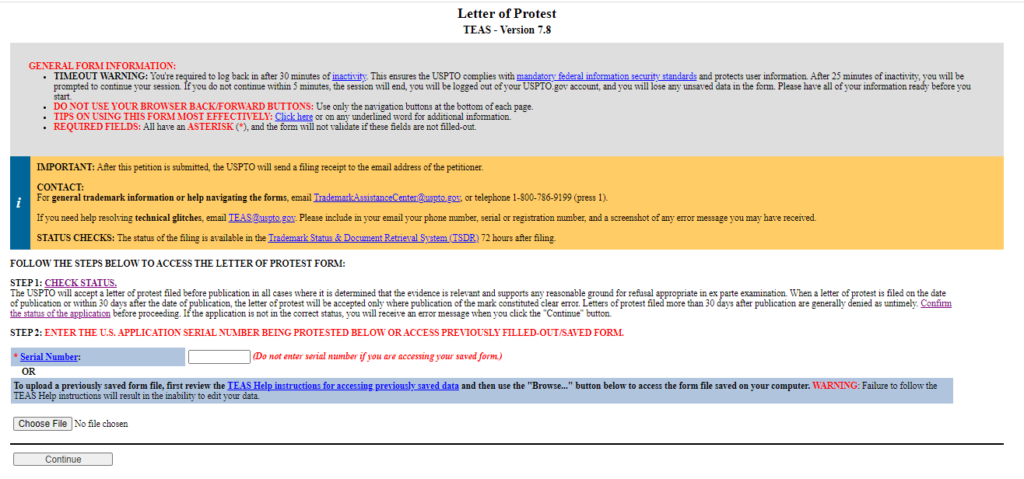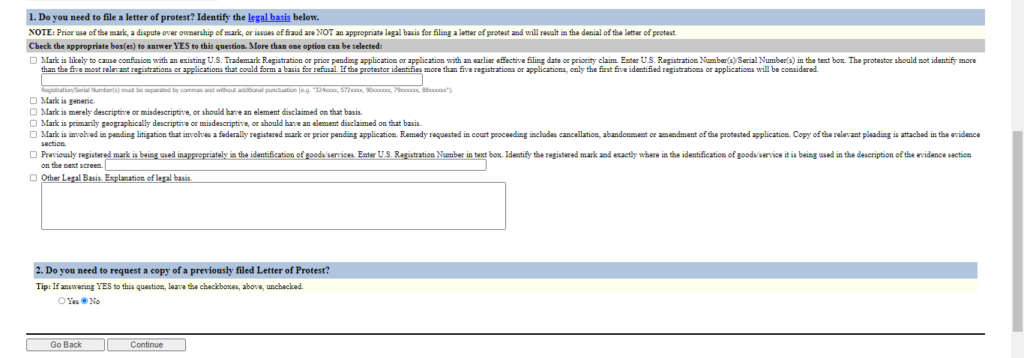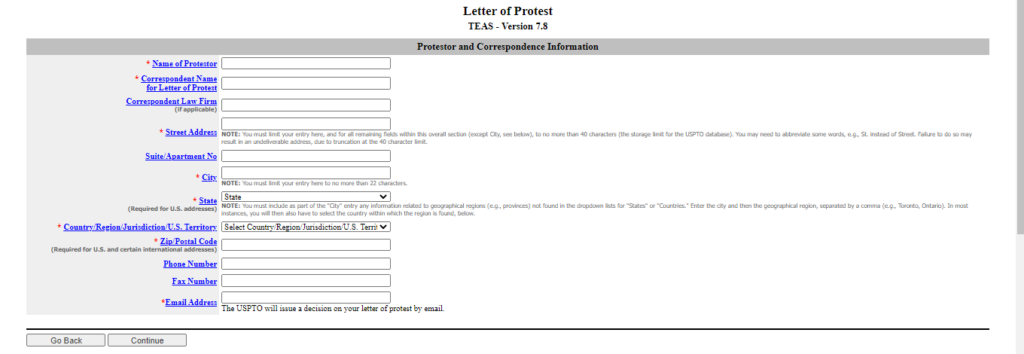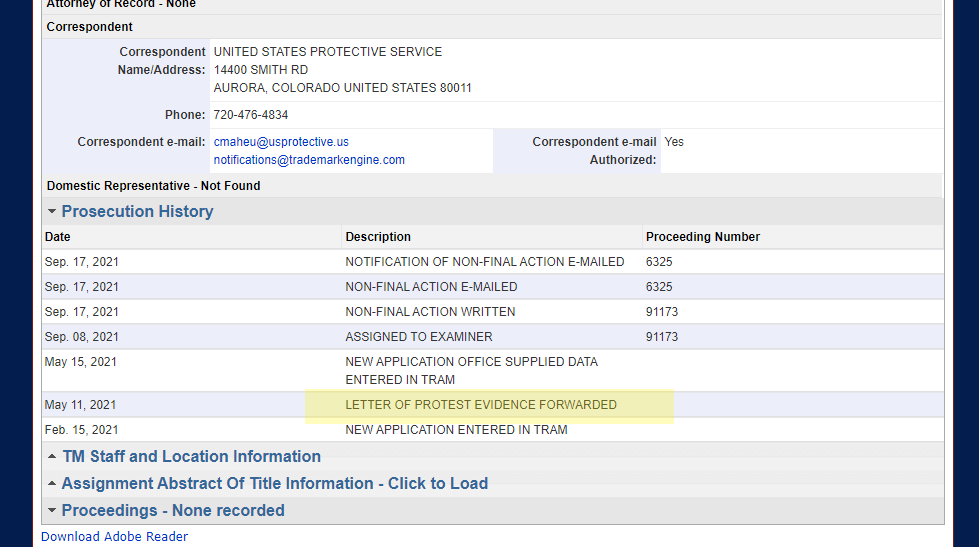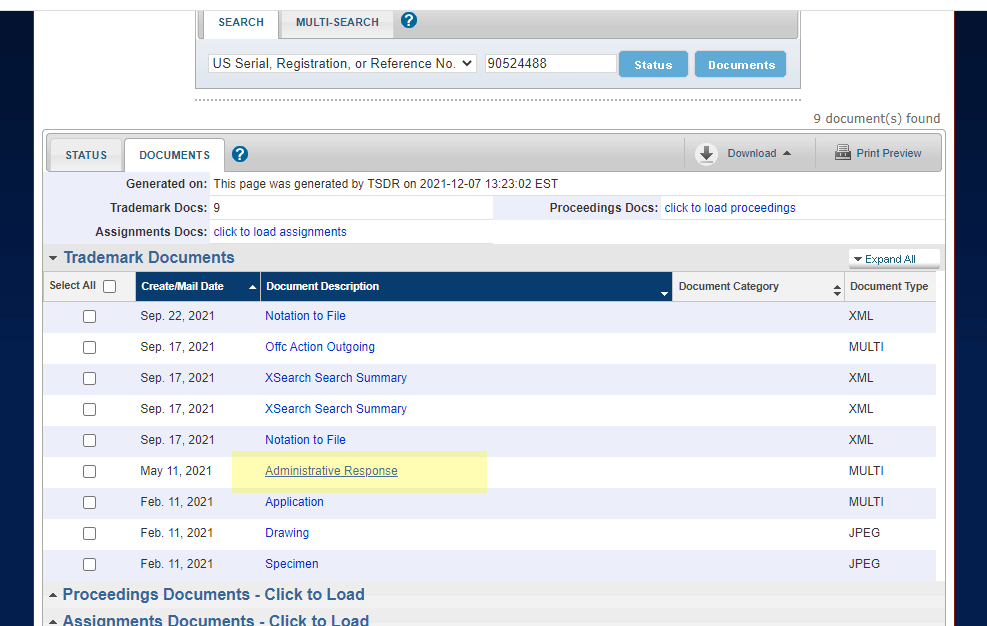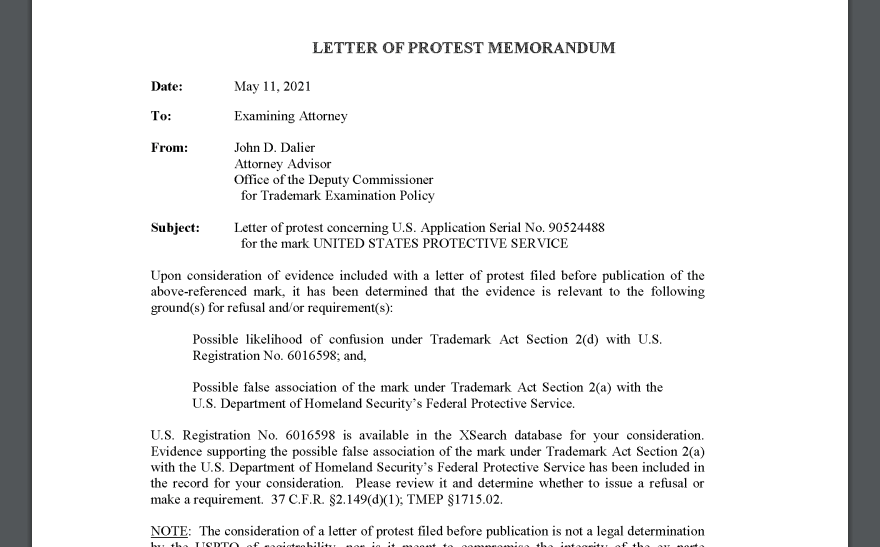Letters of ProtestPractical Tips for Filing a Successful LOP
Alt Legal Team | December 08, 2021
The Letter of Protest (LOP) is a useful tool for trademark practitioners and brand owners. Third parties can use LOPs to submit evidence to the USPTO relevant to the registrability of a trademark during the initial examination of the application. Third parties may use LOPs to challenge a mark based on likelihood of confusion, descriptiveness/genericness, the allegation that the mark is a widely used message, among a variety of other reasons. Under the Trademark Modernization Act (TMA), Letter of Protest determinations are now final and non-reviewable.
This article provides a roadmap for how to file a Letter of Protest and USPTO procedures for processing and acting on LOP filings. We’ve included many useful practice tips to improve your success when filing a LOP. Also, be sure to check out our related article on Letter of Protest evidence to help you determine what evidence you’ll need to provide to best support your grounds for filing a LOP, Letters of Protest: Provide Convincing Evidence for Successful LOPs.
The Trademark Modernization Act and LOPs
The Trademark Modernization Act (TMA) codifies the LOP procedure at 37 C.F.R. §2.149. The TMEP discusses procedures for LOP’s Against Pending Applications at §1715. As of December 27, 2021, the USPTO has two months in which to review LOPs after they have been filed.
Before Filing a LOP
The USPTO notes that when filing a LOP, be sure to consult the USPTO’s LOP Practice Tips for frequently updated procedures and evidentiary requirements. Check even if it’s only been a month or two since your last LOP filing because the updates are frequent! If you have any questions about LOPs and/or procedure, call the petitions office at (571) 272-8950 (8:00am- 5:00pm ET) and you’ll receive a reply within 24 hours.
Common Reasons for Filing a LOP
The most common reasons for filing a LOP include:
- Likelihood of confusion with a prior-filed application or a registered mark
- Descriptiveness or genericness
- Registered marks used inappropriately in identification
- Widely used/common messages
- Specimens do not show mark in use in commerce
- False connection is created with the protestor or a third party (Note: the party filing the protestor doesn’t need to be the owner of the marks used as a basis for the LOP)
When Filing a LOP is Inappropriate
- Protestor claims common law prior use
- Protestor claims that applicant is not the true owner of the mark in the protested application
- Protestor disagrees with Examining Attorney’s handling of an application
Timing
File the LOP as soon as possible after the application has been filed and preferably before the mark is published for opposition. A pre-publication LOP is filed any time after the application is filed and the day before publication. A post-publication LOP is filed any time between the day of publication and the close of the 30-day opposition period. Requests for extensions of time to file a LOP must be submitted to the Director and are only granted in extraordinary circumstances.
Some important timing considerations include:
- If a §44(d) or §66(a) application was not in the USPTO records when the protested application was approved for publication, a late LOP may be accepted and no petition is required.
- A LOP against a §66(a) application must be filed before the 18-month deadline after the International Bureau forwarded the application to the USPTO.
- If a LOP is filed within the 30-day opposition period but the application cannot be withdrawn from issuance of registration, then the LOP is untimely. This can happen with marks registering to the Supplemental Register.
Also, be sure to consider that the protestor must also file a Notice of Opposition within 30 days of publication of the mark, or file a request for an extension of time to oppose. Submitting a LOP does not extend or stay the time to file a Notice of Opposition. These are two separate tracks and if you want to preserve your right to oppose, you must file accordingly at the same time as the LOP is being filed/considered. Of note, if an opposition period is extended, the original 30-day period still applies to the LOP deadline.
Basic LOP Filing Requirements
Note that the TMA has implemented some changes to the LOP filing procedure:
- Must be filed using TEAS in a timely manner
- Must be accompanied with a $50 fee (new)
- If the LOP objection ground requires evidence, the evidence must be set forth with an itemized index (new)
- Must provide protestor’s email address
- Must separately submit a LOP for each protested application
LOP Form
The USPTO website contains a LOP Form that must be filled out and submitted. The form is composed of three parts: Page 1 – Assert Grounds, Page 2 – Submit Evidence, Page 3 – Correspondence Information.
USPTO Review Process After the LOP is Filed
After the LOP is filed, the USPTO will provide a notice to the protestor (a LOP Notice of Determination), indicating that the LOP has been received and the examining attorney will make a determination. This notice will not go on record because it identifies the protestor, but the entry “Letter of Protest Evidence Forwarded” will appear in TSDR. This is how you will know that your LOP has been considered and evidence has been forwarded to the examining attorney. Note, if you use Alt Legal for your docketing, we will notify you when these updates occur.
If you look in the Documents section under “Administrative Response” you can see what was forwarded to the examining attorney, including all evidence, in what is called the “Letter of Protest Memorandum.”
Of note, if the protestor is not the owner of the mark cited in LOP against a pending application, the owner of the mark does NOT get notified that the mark is involved in a protest. The USPTO will not notify the owner that someone is acting on their behalf.
Common Reasons Why a LOP Will Not be Considered
If a LOP is received and the examining attorney decides not to take action, you will receive a Letter of Protest Notice of Determination. The prosecution history will appear in TSDR “Letter of protestor evidence forwarded” and “Letter of protest evidence reviewed – no action taken.” If your LOP is not considered, there is no appeal process. However, the protestor can always file a second LOP as long as the opposition period hadn’t ended. Here are common reasons why a LOP will not be considered:
- Protestor does not provide evidence or provides evidence that isn’t usable (no URL, date, or screen capture is off, etc.)
- Protestor does not provide an index of evidence
- Protestor wrote arguments or identifies themselves (or protestor’s counsel) on the evidence
- Protestor submitted more than 10 items of evidence per reason or protestor provided more than 75 pages of evidence without submitting an explanation of special circumstances
- Protestor is arguing relatedness of goods/services and relies on foreign registrations that were filed not based on use
- Typographical error when identifying registration number
- Evidence does not contain URL access date/print date; Evidence does not provide date of publication (printed articles)
- Evidence contains a single page with two screen captures (which is acceptable) but one of the screenshots is unacceptable (ex. the date is cut off), then the entire page is unacceptable. If this is all the evidence that has been submitted, then the LOP will not be considered.
- Examining attorney has already raised the reasons listed in the LOP in an Office action. If you’ve submitted good evidence that the examining attorney has not used, then the examining attorney may use the evidence should there be a final office action issued.
